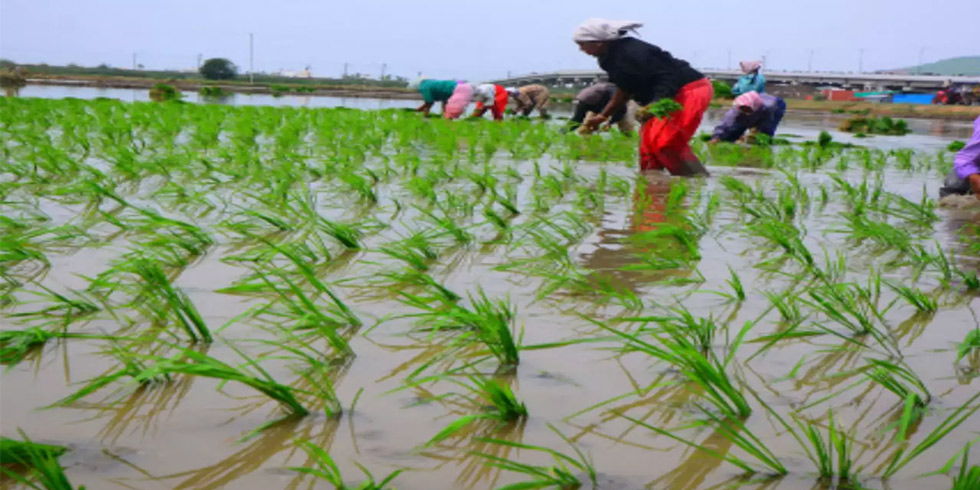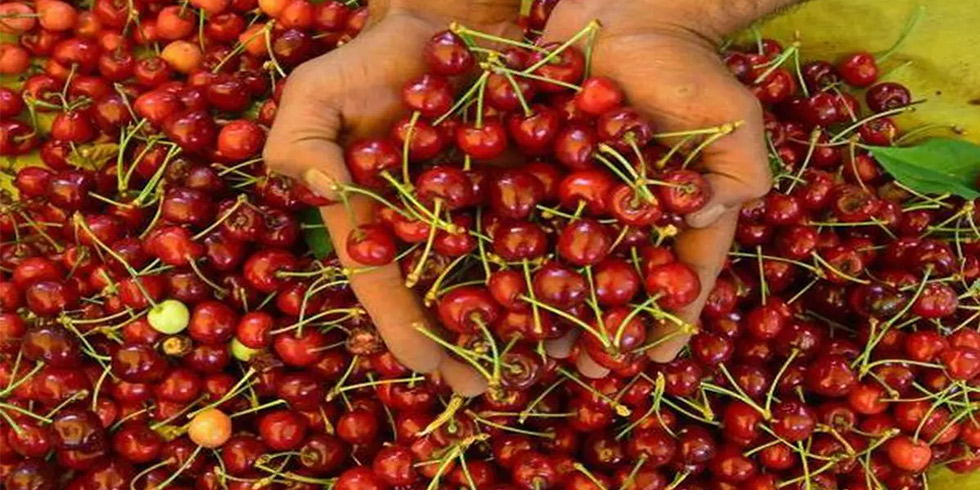Rice exports from India, the world’s second-largest grower, are poised to reach a record for a second year as the harvest may rebound on normal monsoon rain, potentially widening a global surplus.
Shipments will climb 5 percent to 10.5 million metric tons in the year beginning April, according to the median of estimates from six exporters, a government official and an industry executive compiled by Bloomberg. Output may jump to an all-time high of 110 million tons in the season beginning July, according to Vijay Setia, a former president of the All India Rice Exporters Association.
Surging exports from India may add to global food supplies as farmers from Vietnam to China are preparing to plant a record rice crop. Stockpiles in Thailand have surged to an all-time high as the government buys supplies from farmers, while exports from Myanmar and Cambodia have expanded. The glut may further curb world food costs which tumbled for five straight months through February.
“Prices may be depressed if Thailand starts putting a lot of supply in the market and India continues its exports,” said Concepcion Calpe, the secretary of the United Nations’ Food & Agriculture Organization’s inter-governmental rice group, who has tracked the market since 1998. “Vietnam has a lot of supplies and Myanmar is also trying to gain more markets.”
Global Surplus
Global production of rice, the staple for half the world, will climb 1.2 percent to 472 million tons next year, while stockpiles in five largest shippers are estimated at 38 million tons, equals to one year of imports, according to International Grains Council data. World inventories are forecast at a record 171 million tons in 2012-2013 as supply beats consumption for an eighth season, according to the FAO.
The monsoon, which accounts for more than 70 percent of India’s annual rainfall, will be normal for the third time in four years in 2013 and chances of a drought are only 4 percent, according to Jatin Singh, chief executive of Skymet Weather Services Pvt., who correctly predicted a drought in 2009. That may boost rice planting, according to Setia.
“There is no reason why we cannot boost exports next year when monsoon will be normal,” Setia said. Shipments reached a record even after a drought cut output in 2012-2013, he said. Production may drop to 101.8 million tons in the year ending June from 105.3 million tons a year earlier, according to the farm ministry.
Shipments from India may fall if Thailand decides to offload its stockpiles, said R. Sundaresan, executive director at the rice exporters association.
Thai Inventories
Stockpiles in Thailand jumped after Prime Minister Yingluck Shinawatra started buying from farmers in 2011, fulfilling an election pledge to boost rural incomes. The country may run out of warehouse space as reserves jump 40 percent to a record 18.2 million tons, according to the United Nations.
Prices in Vietnam, an Asian benchmark, will drop 6.6 percent by December to $377.50 a ton, the lowest level since 2010, based on the median of 10 trader estimates published by Bloomberg on March 5. Rough-rice futures traded on the Chicago Board of Trade, which have declined 1.6 percent this year, traded little changed at $14.940 per 100 pounds today.
“If prices fall, the African countries and the Near East markets will benefit and it could even be that there will be increased flow of Asian rice into Latin America,” Calpe said.
Exports from Myanmar, formerly the largest shipper, gained to 600,000 tons in 2012-2013 from 388,000 tons a decade ago, according to the U.S. Department of Agriculture data. Cambodia’s overseas trade may total 975,000 tons this year from 10,000 tons in 2002-2003.
Food Bill
India is exporting rice mainly to Africa and Bangladesh at about $395 a ton, while the premium basmati rice is sold at about $990 per ton to the Middle East, Iran and Europe, according to data from state-run Agricultural and Processed Food Products Export Development Authority. Basmati exports account for about 25 percent of total sales, the data showed.
India’s exports will depend on monsoon and domestic requirement to run a food security bill, said Samarendu Mohanty, a senior economist at the Philippines-based International Rice Research Institute. Any decline in shipments from India will be met by increased sales from Thailand, which will nullify the impact on prices, he said.
India’s cabinet on March 19 approved changes to the food security bill that grants 67 percent of the population the right to buy grains at subsidized rates. The government will need 61.2 mil
Rice Exports From India Seen At Record As Harvest To Rebound








Add Comment